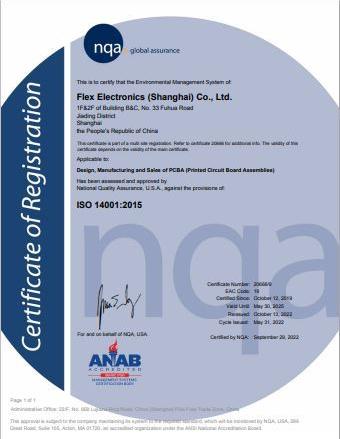Sustainability in production

Introduction
As a measure of how a company operates in regard to the planet and its people, ESG (Environmental Social and Governance) metrics are increasingly scrutinized by socially conscious investors when assessing a company’s brand value. With over 170,000 employees operating out of over 100 locations across 30 countries, Flex is highly aware of its responsibilities towards its stakeholders and society and is proud of its robust and standardized ESG management systems.
As an integral part of the Flex organization with sites in North America, APAC and EMEA, including production sites in China and Malaysia, Flex Power Modules plays a key role in the operationalization of the Flex Corporate ESG strategy.
In this, the first of a four-part blog series looking at how Flex Power Modules is supporting the global Flex sustainability goals, we focus on the Flex Power Modules production processes.
Flex Power Modules
Flex Power Modules designs and manufactures high efficiency board-mounted DC/DC converters, with customers in the telecom, data center, cloud computing, artificial intelligence, industrial, and railway market segments. Our production site in Shanghai, China has been operating for almost 30 years, during which it has delivered in excess of 120 million power modules. For Flex Power Modules, sustainability is a constantly evolving process, and our in-house “green” team provides governance for our local initiatives as well as the link into the wider Flex EMS processes.
Flex Power Modules: Current ESG Priorities
As we align our local ESG goals with the global Flex Sustainability plan we are initially focused on the following specific areas which will materially improve the environmental impact of our production processes.
Waste
Reduction of waste is a major goal on the Flex Sustainability plan, with a target to achieve zero waste in 50% of global manufacturing and logistics sites by 2025. As a manufacturer of electrical and electronic equipment (EEE), Flex Power Modules is fully compliant with the EU’s Waste Electrical and Electronic Equipment Regulations.
GHG Emissions
The process used by organizations to quantify their GHG emissions is known as carbon accounting, and the GHG protocol is used by all types of organizations when disclosing their GHG emissions. The GHG protocol employs a scope-based classifications system, where:
Scope 1 emissions are the emissions that are directly produced by the operations of the organization itself.
Scope 2 emissions result from the fuel or electricity purchased by the organization to power its equipment and vehicles and to heat and light its office space. Scope 2 emissions are usually generated off-site by the company’s energy providers.
Scope 3 emissions include emissions from all activities that a company is directly or indirectly involved in that aren’t covered by either Scope 1 or Scope 2 emissions. Scope 3 emissions include GHG emissions from upstream (suppliers) and downstream (customer) activities. Scope 3 emissions also cover transportation, including employee commuting and business travel.
The Flex Corporate sustainability plan targets a 50% reduction in total Scope 1 and Scope 2 emissions by 2030, when compared to the baseline level of 2019. For Flex Power Modules Production processes, most Scope 1 emissions are generated by the operation of our production equipment and from the energy used on heat and light in our production facilities. Over the last three years we have focused on improving efficiency in these areas with initiatives including:
- Replacing inefficient fluorescent tubes with LED lighting
- Introducing smart lighting systems throughout our production and office facilities
- Reducing heat loss in key areas within the production plant through use of sealing strips
- Eliminating weekend temperature control on shop floor by storing WIP materials in alternative location
These measures have, collectively, reduced electricity consumption on lighting by 20% and led to a total energy saving of 5%.
Since the Scope 1 and Scope 2 emissions of our suppliers contribute directly to our Scope 3 emissions, a key goal of the Flex Sustainability plan is for 50% of preferred suppliers to have a sustainability plan by 2025 and 100% by 2030. Some examples of how we are working to achieve this goal will be discussed in a future blog in this series.
Standards and assessment
As more organizations attempt to quantify the environmental impact of their operations, international standards become increasingly important to ensure the quality and consistency of data collection methods.
ISO 14001 is the internationally recognized standard for environmental management systems (EMS) and enables organizations to signal their commitment to environmental improvement. For Flex Power Modules, ISO 14001 is a fundamental pillar of our sustainability strategy, and our production facilities are accredited to this level.
As a role model for environmental management, Flex both complies with and participates in the development of a range of other, globally relevant standards including SBTi, GRI Universal standards, SASB metrics, CDP, and TCFD.
Sustainability runs throughout the product lifecycle
At Flex Power Modules, we are conscious that we must continue to strive, first to measure and then to reduce our environmental impact. By aligning our processes with the global Flex ESG management systems we are leveraging the vast experience and in-depth resources of the organization to accelerate our journey to net-zero.

